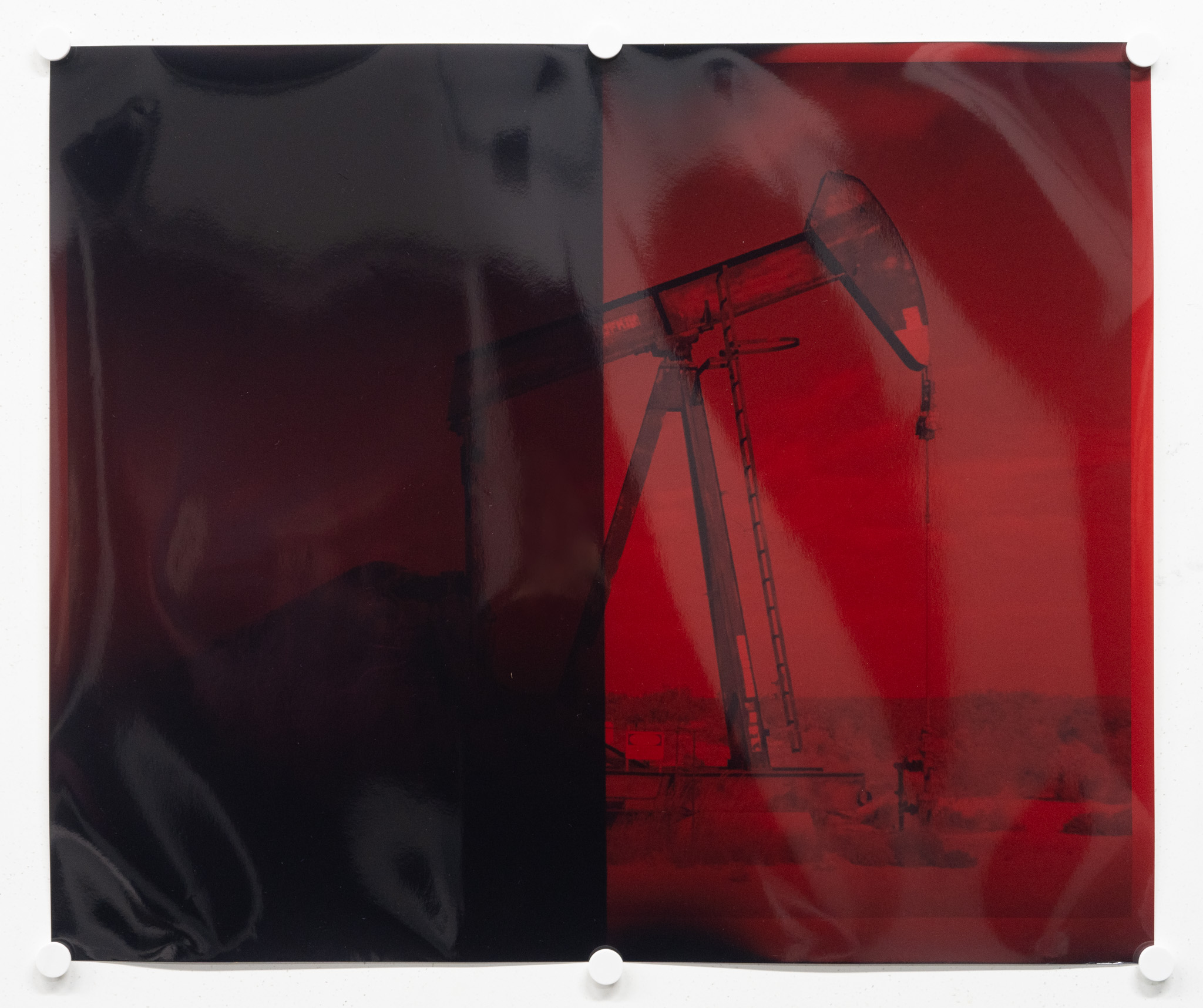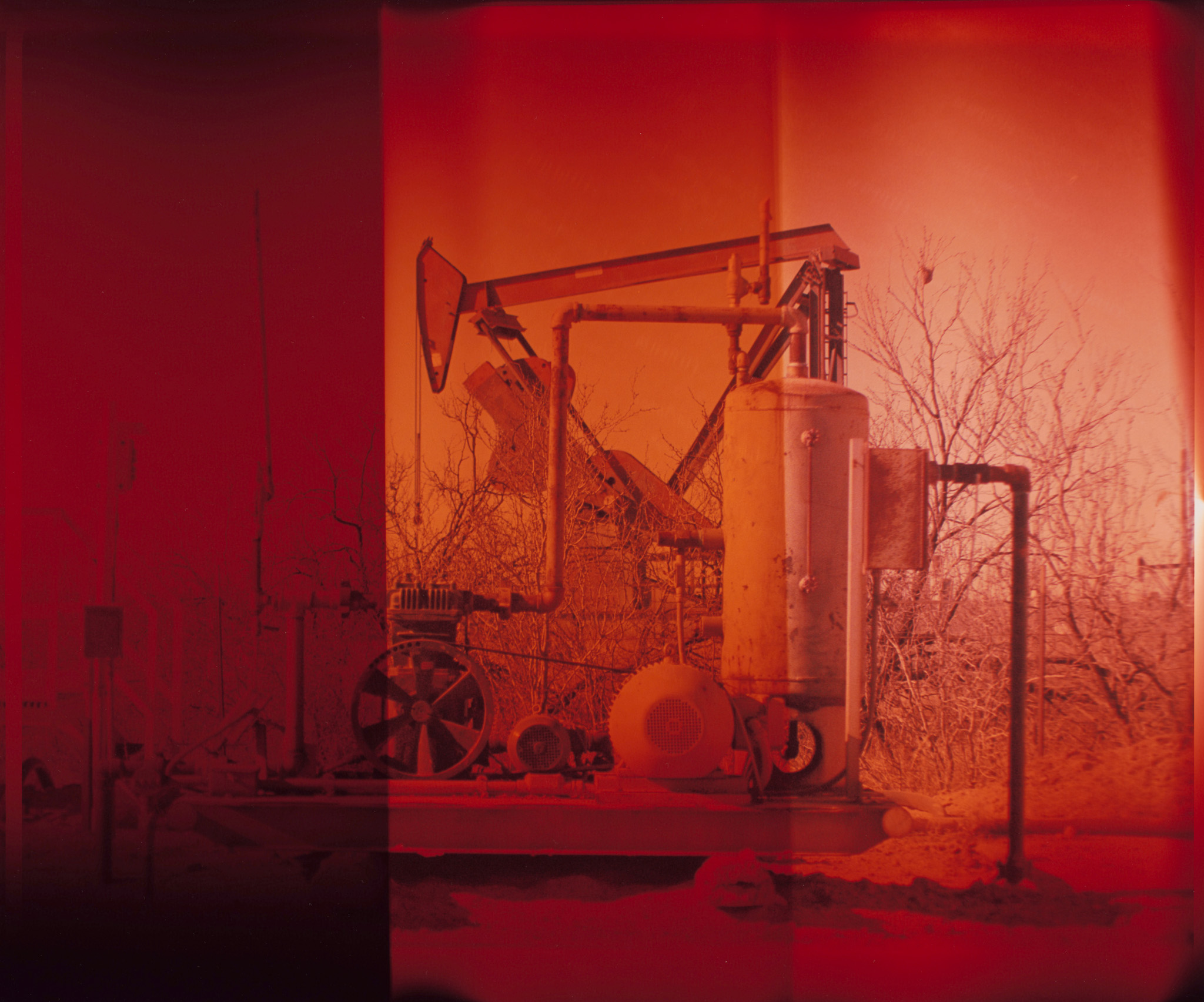




Signals from a Solar Well
Signals from a Solar Well layers sounds recorded with contact mics on a solar panel, its box, and the pump as it draws water. The windmill that used to power this well broke. It was too expensive to fix, so a solar panel replaced it. With all the sun in West Texas, it now pumps water more consistently over time. Moss grows in the trough, fueled by the same sunlight that powers the pump. I was mesmerized by the moths caught in what they must have thought was heaven, a shimmering surface drawing them in, only to find themselves trapped, their wings too waterlogged to escape. Now this well offers water to animals who are surrounded by oil derricks in a dry landscape.

Aerial view of the solar well

Moss at the bottom of the tank, 35mm
Inherited Paradox
Hand-enlarged C-Prints from 35mm, 20x24in, 2025

This is part of an ongoing collaboration.
I approach this work with the awareness that my relationship to this land is shaped by inherited structures – legacies of ownership, extraction, and silence. I don’t pretend to speak for the land, but I hope to be shaped by it. To listen. To allow space for a different kind of exchange.
What I didn’t expect was how the land would continue to collaborate throughout the development process.










These images emerged from a process that has become central to how I work with film. I hand-enlarge 35mm negatives in an attempt to bring the same kind of tactile materiality I seek in painting into photography. After enlarging, each print is rolled and moved from the darkroom to the processor through a tube. During that transfer, light begins to fog the paper. Because of the way it’s rolled, a line of exposure often runs down the center. The shifts in color come from that same slow, partial exposure to light.

Inherited Paradox




Mandala for the Future
A Participatory Performance by Amanda Hansavathy and Cassidy Conway ColeWhat does a future ceremony look like, one rooted in care and creation rather than loss?
With Mandala for the Future, we invited our community to build a living mandala together, offering seeds, soil, and intention to the earth as artists, humans, and stewards. This was a ritual of regeneration, a way to explore our deep, inner connection to nature. When we focus on connection, boundaries dissolve. It becomes we. And we need each other to survive.
Thank you to SustainLabRCA and everyone who co-created this collective ritual with us. Let’s keep imagining, planting, and committing to building different futures.
Inspired by the cyclical form of mandalas, Mandala for the Future invites a ritual of regeneration. The ceremony begins with grounding offerings such as soil, seeds, water, and found objects from the earth, transforming creation into a shared act of care. Our ancestral repetitive patterns are de-centered, with irregular shapes and sizes into the spiral. We grow intentionally imperfect, because progress isn’t perfect, and embracing the messiness is how we move forward.
In the end, all materials are redistributed or returned to the earth, completing the cycle.
Plants that Persist




I wanted to shift the perspective of change in Camden by seeing it through the plants that persist through the construction / ongoing shifts. Our group kept talking about these plants and how satisfying it was to witness. Using an endoscopic camera, I captured Camden from their viewpoint, reframing resilience as observation. I then layered lumetri color scopes as an X-ray, replacing audible sound with a visual frequency beyond human perception. If plants communicate in wavelengths we cannot hear, what might they be expressing?
Video of Installation
Faculty lead Gareth Polmeer, with vPPR Architects and Lumen
Student team: Tanya Rivera Diaz, Longfei Jiang, A'isha Usman Mu'azu, Mengshuo Wu, Aarti Meyappan Pillai, Junghun Lee, Hongil Yoon, Emily Brissenden, Daudi Kaggwa, Cassidy Cole, Mia Baraka, Siyu Chen
